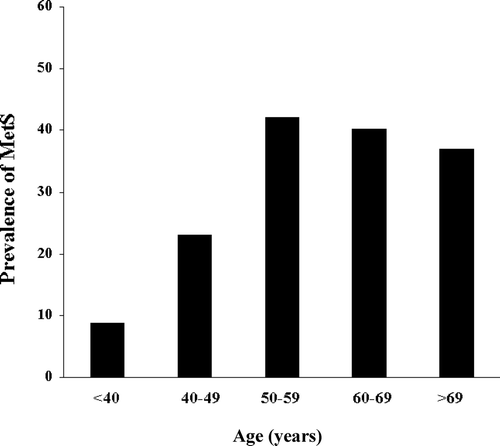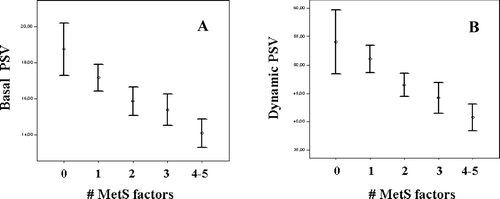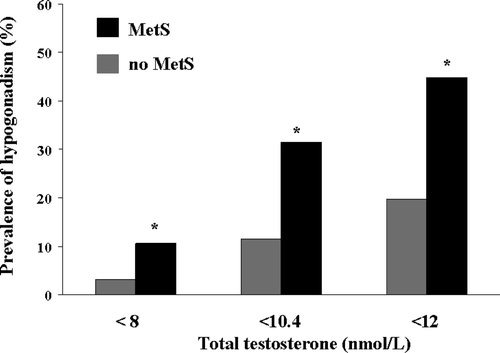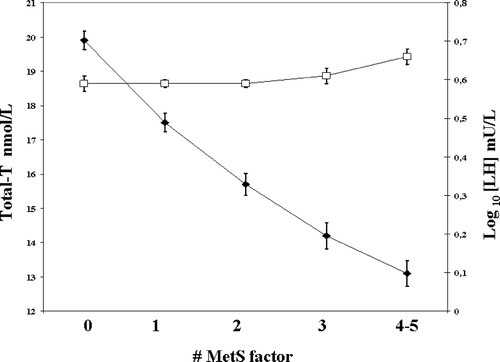Figures & data
Table I. Comparisons of definition of metabolic syndrome: National Cholesterol Education Program-Third Adult Treatment Panel (NCEP-ATPIII) and International Diabetes Federation (IDF)
Figure 1. Prevalence of metabolic syndrome (MetS) in a consecutive series of 1536 patients afferent to our unit for sexual disorders. p < 0.0001 for trend.

Figure 2. Peak systolic velocity (PSV) at penile Doppler ultrasound measured in the basal (A) and dynamic (B, after PGE1 stimulation) conditions as function of the number of metabolic syndrome (MetS) factors (n = 1007; both p < 0.0001 for trend).

Figure 3. Prevalence of hypogonadism (as derived form different criteria) in a consecutive series of 1491 subjects with or without metabolic syndrome (MetS), attending our Unit for sexual dysfunction. *p < 0.0001 vs. no MetS.

Figure 4. Total testosterone (T; black circles) and LH (log. transformed; open squares) levels as function of metabolic syndrome (MetS) factors in a consecutive series of 1535 patients attending our Unit for sexual dysfunction. Data are expressed as mean ± SE. p < 0.0001 for trend for testosterone levels. p = NS for trend for LH levels.
